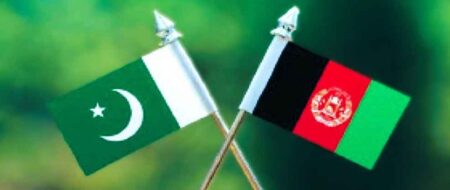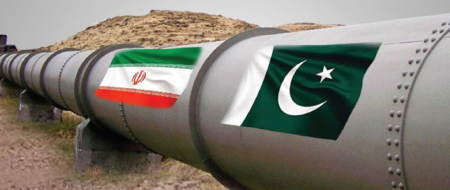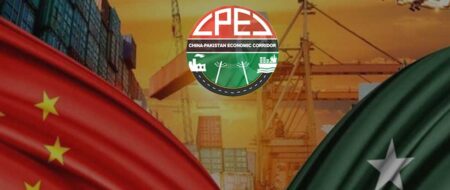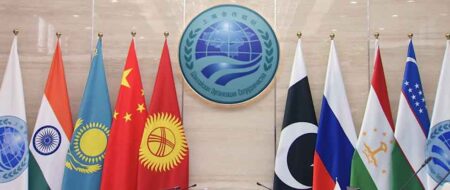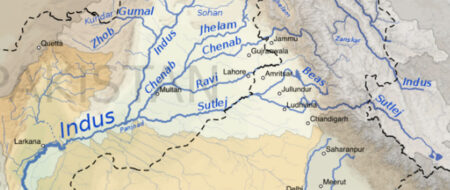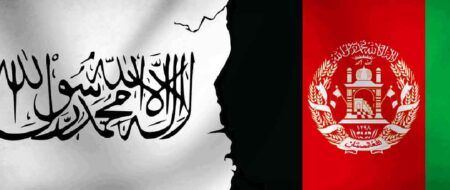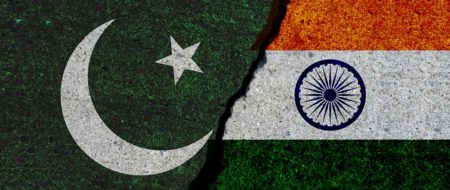Sino-Iran Relations: Current Developments and Future Scenario
Bilateral relations of China and Iran, after having witnessed many ups and downs in the past, have been growing steadily in the recent years. A genial relationship between the two not only connects three regions; East Asia, West Asia and Central Asia, but also has the potential to positively affect the prevalent regional as well as global politics.
Policy Perspectives , Volume7 , Number2, January – June 2010
Abstract
[Bilateral relations of China and Iran, after having witnessed many ups and downs in the past, have been growing steadily in the recent years. A genial relationship between the two not only connects three regions; East Asia, West Asia and Central Asia, but also has the potential to positively affect the prevalent regional as well as global politics. However, different positions of China and Iran in world politics pose a challenge to their bilateral relations. Enhancing mutual confidence and adopting sound policies on the issues such as Iran’s nuclear program and US backed sanctions on Iran are needed on both sides to cement and sustain this budding partnership – Ed.]
Introduction
The relationship between China and Iran evokes special interest internationally, primarily because the two regional powers are thought to pose a challenge to US hegemony in their neighborhood. There is much that the two countries have in common. Both proudly trace their roots to ancient civilizations. Both have emerged from a long history of empire. And both are important players in Asia—China in the East and Iran in the West. Their geographical linkages with significant regions of Asia are a source of much of their geo-political potential. China is the largest entity in the region and its vast territory joins it with East Asia, Central Asia and South Asia. Likewise, Iran is the second largest country in the Middle East and the largest geo-political entity in the Gulf,[1] sharing its northern borders with three post-Soviet states: Armenia, Azerbaijan, and Turkmenistan; its western borders with Turkey in the north and Iraq in the south; and its eastern borders with Afghanistan in the north and Pakistan in the south. These highly strategic locations increase the economic, trade and political potential of both states and enable them to exercise considerable influence on neighboring regions in particular and the world in general.
This paper examines the relationship between Iran and China, taking stock of the interests that bring the two together and the major areas of their cooperation, and the implications of regional and international developments for its future.
Brief History of Relations
Relations between Iran and China date back to ancient times when Persian and Chinese dynasties enjoyed active trade linkages through the famous Silk Route; in fact, the Silk Route mainly became established in the wake of splendid diplomatic relations between the two civilizations.[2] Although there were few diplomatic visits, active trade enriched civilized and developed urban societies on both sides. Historically, people-to-people contact between the two civilizations was marginal; however, instances of religious affiliation between the two can be found, chiefly, in the visits of Buddhist monks from Parthia (today’s Iran) to China for missionary activities,[3] and there were also military contacts between the two nations.
Until relatively recently, diplomatic and trade linkages between China and Iran were somewhat diffuse. From medieval to modern times, both nations were preoccupied with internal matters. In recent history, both underwent a transformation from dynastic to constitutional rule, dealt with interference from imperial powers, and faced internal turmoil.
However, in the post–World War II era, the relationship between the two countries became charged and complicated by the cold war. At the outset, China was engaged in friendly relations with the Union of Soviet Socialist Republics (USSR) while Iran was allied with the United States; therefore the two countries did not develop direct diplomatic ties. In 1951, when Iran’s nationalist leader Mohammed Mossadiq nationalized British oil companies, China provided political and ideological support to the socialist forces in Iran and openly criticized the growing interference of the United States in the affairs of Iran.[4] However, as the dynamics of Sino-Soviet relations changed in the mid-1960s, China opposed both Mohammad Reza Shah’s regime and the pro-Soviet socialist forces in Iran.[5] Subsequently, various factors coincided to bring the two countries closer: at the end of China’s Cultural Revolution and as the tension between the United States and China started easing, China chose to support the regime of the Shah of Iran;[6] within Iran, a group of young pro-China intellectuals and political activists emerged.[7] These were among the developments that paved the way for diplomatic ties between the two countries and resulted in some informal visits between the two. Before formal diplomatic ties could commence, however, the Shah of Iran awaited the cue from the US;[8] apparently, this was given because, on August 17, 1971—two days after President Nixon’s visit to Beijing—China and Iran proclaimed full diplomatic relations.[9]
Economic and cultural exchanges between Iran and China made some progress after this announcement of diplomatic relations, but this was reversed by the Iranian revolution in 1979. Although China encouraged the revolutionary regime and recognized it under its upheld principle of peaceful coexistence, the new regime in Tehran declined its overture, raising the slogan of “neither East, nor West,” and criticizing China’s erstwhile support to the Shah.[10] At this time, China was in the process of moderating its relations with the United States, and there was a danger that these efforts might be damaged if it extended support to Iran’s new regime. Therefore, in response to Iran’s negative signals, China also withdrew and termed the taking hostage of American diplomats in Iran a violation of international law.[11]
Notwithstanding these less than friendly beginnings, relations between the new Iranian regime and China were to improve. In 1980, the Iran-Iraq war broke out. While the United States and USSR supported Iraq, Chinese policymakers, pursuing modernization and market reform under Deng Xiaoping, were attracted by the economic benefits to be reaped by selling arms to Iran. They were also determined to counter Soviet ideological influence in the Middle East; Beijing considered the proliferation of weapons by the Soviet Union a ploy for pursuing political,
Economic and ideological interests in the region.[12] These were some of the factors that compelled China to revisit its foreign policy towards Iran.
Likewise, Iran was pushed to reassess its policy towards China by the heavy burden of the nine-year war with Iraq, economic sanctions, the rise to power of pragmatists determined to defy the US agenda of isolating Iran, and the urgent need for reconstruction, rehabilitation, arms and ammunition.[13] As the war wound to a close, there was a realization that dynamics and requisites had changed: during a visit to Iran by Tian Jiyun, the Chinese deputy premier, in 1989, President Khomeini said, “In cooperating with other countries, we prefer to deal with countries for which our nation does not harbor bitter memories.”[14]
From the re-establishment of diplomatic relations in the mid-1980s until the end of the cold war and the disintegration of the Soviet Union, bilateral relations between China and Iran made significant progress. In the early 1990s, there was an expansion in the oil needs of China’s fast-growing economy and it became one of the world’s largest oil importers. Accordingly, accessing the abundant untapped energy resources of the newly independent Central Asian Republics became an important objective of Chinese foreign policy. On the other hand, Iran, under its policy of limited market reform, exploration of energy resources, and reconstruction of destroyed infrastructure, looked towards East Asia, which, according to the Iranian leadership, was preferable to the Eastern or Western political blocs.[15] As tensions mounted between China and the United States due to the 1995–1996 Taiwan Strait issue, China greeted Iranian overtures, and the rapid market expansion they signified, with open arms.
Today, China and Iran continue to have strong interests in developing mutual cooperation in many fields. However, their relationship is confronted with some new challenges in the aftermath of the September 11 attacks. As it launched its global “war against terror,” the United States took a hard line on Iran, with former US president, George W. Bush, placing Tehran on the “axis of evil” in his January 2002 State of the Union speech and charging it with “sponsoring terrorism, pursuing weapons of mass destruction, exerting a destabilizing influence in western Afghanistan, and possibly harboring Al Qaeda fugitives and human rights abuses.”[16] In this environment, although pressure is directed most strongly at Iran, it also applies indirectly to countries cooperating with it. China’s diplomatic, economic, political and military cooperation with Iran therefore makes it susceptible to Western censure.
Core Interests
China is an emerging great power and its rapid development has increased its energy needs manifold. The country became a net importer of oil in 1992 and is now the second-largest importer of oil in the world.[17] To fulfill its energy demands, China is expanding its role in the energy-rich regions, such as the Gulf and the Central Asian Republics. The former possesses approximately 715 billion barrel proven oil reserves and 2,462 trillion cubic feet of natural gas,[18] while the latter’s untapped oil and gas resources, holding approximately 75 billion barrel of proven oil reserves and 649,52 trillion cubic feet of natural gas, comprise the second-largest energy reservoir in the world.[19] Among the key interests of Chinese energy, economic and foreign policies are the development of oil and gas supply lines from these energy-rich areas to China in the form of pipeline or rail and road links, and the security of energy resources and supplies.[20]
It is not easy for China to pursue these policies independently in the current geo-political and geo-strategic situation in the region, particularly, the presence in neighboring regions of external forces who enjoy a relative strategic advantage and constitute a challenge.[21] At present, Iran seems to be one of the most appropriate options for China to fulfill its energy needs: unlike other oil-exporting countries of the Gulf, it is more independent in policy decisions like the prices and supplies of its energy resources; moreover, as a country from which American and European companies are absent, it offers Chinese companies a more comfortable environment for establishing their presence.[22]
Iran is the second-largest producer of gas in the world with proven gas reserves estimated at 29.7 trillion cubic meters and proven crude oil reserves at 136.15 billion barrels. The country’s geographic position and military capability “give it leverage over the Strait of Hormuz, which is the main passageway for 15 to 16 million barrels of oil a day, roughly two-third of total world oil trade by tanker and 20 % of total world daily oil demand.”[23]
Despite possessing credible elements of national power, however, Iran has been facing constant challenges from regional and international actors. As mentioned earlier, after 9/11, the United States directed much of the hype for its hawkish agenda directly against Iran. This pressure was aimed at containing its economic, social, political and diplomatic development at the international level and deteriorating its image in general. Therefore, expanding its economic sphere of influence, developing bilateral relations, making long-term trade contracts with neighboring countries and emerging powers, and striving against American-backed sanctions and strategies for isolating it from the international community and political forums became vital interests for Iran.
It appears that the underlying reason for the “give and take” strategy adopted by China and Iran in their bilateral relationship is the realization that their core interests are threatened by the current international scenario. It is in this backdrop that their cooperation, discussed in the following section, should be viewed.
Major Areas of Cooperation
Through 39 years of diplomatic relations, Iran and China have increased their cooperation in many spheres, particularly the economic and trade, energy and defense sectors. There has also been technological, technical, scientific, infrastructural, and small- to heavy-industrial cooperation, as well as art and cultural exchanges. These spheres are discussed in more detail below, with reference to the three main phases of the two countries’ relationship, i.e., relations during the regime of the Shah of Iran; relations after the revolution and until September 11, 2001; and relations since September 11.
Economic and Trade Cooperation: After the establishment of diplomatic ties during the Shah’s regime, both states started expanding their trade ties. However, trade remained limited to Chinese imports of chemical fertilizers; agricultural equipments; vehicles, such as minibuses, trucks, and motor scooters; a few home appliances, such as refrigerators and television sets; detergents, such as sodium carbonate, sulfur; and aluminum ingots, [24] and Iranian imports of paint; stationery; sports goods; antimony; foodstuffs; assorted tin, iron and steel products; tea; and fabrics.[25] At the time, China also took a keen interest in modernizing Iran’s silk and textile industries.[26] By the early 1970s, China was the fourth-largest importer of Iranian goods.[27]
From right after the Iranian revolution until the end of the Iran-Iraq war, trade between the two countries was very low. Afterwards, it grew swiftly, driven mainly by China’s rapid development and its eagerness to expand its outreach to the oil-rich region, and by Iran’s need for reliable partners for the rehabilitation and reconstruction of its war-ravaged infrastructure. This convergence of interests resulted in extensive trade in several fields, including health; equipment for oil refineries; industries and mines; construction of railways; power stations; dams; sugarcane cultivation and processing; and the silk; pulp and paper; textile and garments; electrical; pharmaceutical; ceramics; motor vehicle industries; as well as assistance in the technical and scientific fields.[28]
Both states have continued to show interest in enhancing and expanding their economic and trade relations. In the early 1990s, Iran signed agreements with the Chinese International and Investment Company (CITIC) to build Tehran’s newly planned metro system.[29] China also pledged to import some non-oil commodities from Iran.[30] Among important moves to boost economic and trade relations, a permanent Iranian trade center was established in Shanghai in 2009.[31] And at present, more than 100 Chinese state companies are operating in Iran and stood among Iran’s top three trade partners.[32] The close ties were especially acknowledged by the president of China, Hu Jintao, in 2005, who said in a meeting with the Iranian vice president, Mohammad Reza Aref, that the economies of both states were highly complementary.[33] The figures certainly bear out his statement: in 2006, the value of trade between the two states stood at $14 billion,[34] and was projected to reach $20 billion the following year and reached its peak in 2008 with $ 28 billion with 35% growth over 2007.[35]
Chinese firms are working on some of the major port, jetty, airport, metro and mines development projects in six cities of Iran.[36] There is a substantial increase in industrial and trade attachments, and there are now Chinese firms providing electricity, building dams, operating cement plants and steel mills, involved in railways and transportation, and running oil and gas refineries in Iran.[37] Iran has also shown interest in cooperating with China in the field of automobile production,[38] and the two countries’ cooperation in the manufacturing and export of cars is growing.[39] Likewise, trade relations in labor cooperation are also on the rise.[40]
In 2006, China imported $2 billion worth of non-oil commodities from Iran.[41] This figure nullifies the perception that Sino-Iran trade is limited to oil products and Iranian non-oil exports to China are marginal. The cooperation is expected to increase further if China succeeds in establishing a new base in the Strait of Malacca—this linkage to the Indian and Pacific Oceans will give it access to the shortest sea routes to the Middle East.[42] During the 13th meeting of the Iran-China Economic Commission, which consists of three committees on commerce, banking and industries, and mines, in Tehran in November 2008, the Iranian foreign minister and Chinese minister of commerce signed three memoranda of understanding for expanding economic cooperation.[43] In the last May Chinese ministers participated in a large conference on foreign investment hosted by Tehran. In the meeting both countries signed a number of agreements totaling $17 billion with the pledge that China would help Iran in construction sector, railway system and host joint trade meetings, whereas Iran would build a new trade center in China’s Muslim majority Xinjiang Province. [44] The bilateral trade is expected to go even higher in coming years as Amir Talabi, caretaker of Asia and Oceania Trade Office of Iran’s Trade Promotion Organization has observed 40% increase in the last 9 months of this Iranian year where total volume of Iran’s export to China stood at $2.1 billion.[45]
Energy Cooperation: Energy cooperation is held to be the backbone of bilateral relations between Iran and China. Oil is a major component of energy cooperation between the two states and, in 2006, Iran overtook Saudi Arab to become the top crude oil supplier to China,[46] and in 2008 Iran was exporting 408,000 barrels oil a day that especially a robust quantity of oil trade.[47] It is pertinent to outline the history of Sino-Iran energy cooperation.
Iran was exporting oil to China even before formal bilateral relations commenced between the two states. However, these exports were quite minimal: until 1963, China declared itself to be “self-sufficient in oil resources.”[48] However, during the first phase of Sino-Iran relations even though China had oil reserves of its own during 1960s, it imported 1,393,000 tons of crude oil (100,000 tons per annum), in 1976 it imported approximately 200,000 tons and in 1977 it imported 300,000 tons from Iran.[49]
China’s need for oil from Iran was very low during the regime of the Shah of Iran, but gradually started growing in the period after the Iranian revolution. It gained considerable impetus in the late 1980s and when China became a net importer of oil in 1992, its energy cooperation with Iran also increased rapidly. During the second phase of bilateral relations which starts after the revolution of Iran, China reconstructed Iranian oilfields and its National Overseas Engineering Company provided engineering plans and necessary equipments for a $2.6-million coal exploration exercise in Tabas.[50]
In the late 1990s, China Petroleum and Chemical Corporation (Sinopec), a subsidiary of the Chinese Petrochemical Corporation (CPC) and one of China’s largest three oil conglomerates, closed a deal under which it exported a full range of oil exploration machines to Iran.[51] In 2000, Sinopec assisted Iran in the renovation of three oil refineries and also helped in oil and gas drilling projects. China National Petroleum Corporation (CNPC) also drilled 19 gas wells in southern Iran.[52] In the same period, Sinopec constructed oil loading and mixing facilities in Neka. This agreement, worth $150 million, was part of Iran’s Caspian Republic Oil Swap (CROS) initiative and aimed at allowing for one-to-one oil exchanges between Caspian products in the north and Iran’s southern facilities.[53] China and Iran also signed contracts in shipbuilding to allow Chinese conglomerates to build a fleet of five oil tankers; these were facilitated by China’s Export-Import Bank with a $370-million loan in 2000.[54] According to a report Iran has
In the third phase of relations such as since September 11, China and Iran have signed a number of major oil and gas contracts, essentially to meet future challenges. In 2001, Sinopec entered into a contract with Iran for an exploratory oil drilling project estimated at $13 million.[55] At the end of 2006, Petrochina, the top energy firm of China, signed an agreement worth $16 billion with Iran for the purchase of Iranian liquefied natural gas (LNG).[56] This followed two major agreements concerning Iranian LNG: in early 2004, a Chinese state-run company had signed a 25-year contract to import 110 million metric tons of LNG from Iran;[57] later, a $100-billion contract had been signed between Sinopec and Iran[58] that added 250 million metric tons of LNG to the already agreed amount of gas. It is important to mention here that both countries had already reached a preliminary accord of $70–100 billion in which it was decided that China would purchase Iranian oil and gas and develop Iran’s Yadavaran oilfield, which is situated near the Iraqi border.[59] In June 2009, Iran and China signed a $ 5 billion gas deal with the promise that China will develop Iran’s South Pars Gas Field.[61]
Along with these major deals, China has been showing a keen interest in developing other Iranian oilfields in recent years.[61] China’s state-run oil companies have guaranteed their contributions in the exploration and drilling of Iran’s oilfields. As according to a report in the Chinese South Post Morning Daily, released in July 2009, Iran has called on China for the construction of seven new oil refineries and series of economic projects worth $42.8 billion.[62] In November 2009 Sinopec signed a tentative deal to $ 6.5 billion in financing for oil refinery projects.[63] Iran is also considering the option of storing strategic oil in China, and building refineries around Asia.[64] There is a strong likelihood that energy contracts between the two countries will increase in the future. China has assumed an important role in the overall development of Iran’s hydrocarbon resources and the Iranian government clearly favors it as an oil importer; as the Iranian oil minister said, “Japan is our No. 1 energy importer due to historical reasons. . . but we would like to give preference to exports to China.”[65]
The second category of energy cooperation between the two countries pertains to nuclear technology, which China has supplied to Iran, and which both states claim is intended solely for peaceful proposes.[66] However, Western countries, especially the United States, accuse Iran of developing a covert nuclear weapons program, and China of assisting Iran in this program. In the current politically tense international environment, the facts about the Sino-Iran nuclear cooperation have to be presumed to lie somewhere between the exaggerated allegations issuing from the Western bloc and China’s denial of them.[67]
The United States claims that China is supplying nuclear-related technology to Iran. It alleges that China has assisted Iran in acquiring small electromagnetic isotope separation (EMS) machine and 30-kilowatt thermal research reactor;[68] building its uranium mining and purification capacity; fuel, fabrication; and manufacturing zirconium tube.[69] Moreover, the United States maintains that China has provided Iran designs for nuclear weapons, trained Iranian nuclear scientists, supplied two mini-research reactors,[70] and provided the equipments used in electromagnetic isotope separation enrichments of weapons-grade uranium.[71] However, China has denied these allegations.[72]
The United States has imposed sanctions against both China and Iran for this alleged cooperation. Accusing China of proliferating weapons of mass destruction (WMDs) and violating the Treaty on the Non-proliferation of Nuclear Weapons, the US Congress passed the Iran Non-proliferation Act of 2000,[73] on the basis of which the US State Department announced sanctions against five Chinese companies in April 2004, including the North China Industries Corporation (Norinco) and the China Precision Machinery Import/Export Corporation.
Sanctions against Iran for its alleged nuclear weapons program were imposed by the United Nations Security Council (UNSC) under Resolution 1737 on December 23, 2006.[74] There is a long history of US and UNSC sanctions against Iran since its Islamic Revolution.[75] But, Iran has always claimed that its nuclear program is meant only for peaceful proposes.
Although the United States claims that China is assisting Iran in developing its nuclear program, there is no substantial evidence of any recent assistance of this nature. In fact, at present, Iran is more dependent for such assistance on Russia, which is helping it in the development of the Bushehr nuclear power plant.[76] To some extent, it is true that both Russia and China are backing Iranian nuclear power acquisition for civilian purposes, Russia on the operational level, and China in the diplomatic and political sphere.
Energy cooperation may be considered as one of the most significant sources of the acceleration of Sino-Iran relations. Both China and Iran have ensured reliable buyer and supplier respectively. Their cooperation in this sphere offers viable solutions to important current and anticipated challenges, i.e., meeting China’s energy needs and accelerating Iran’s economic and energy development through the development of its energy fields.
Defense Cooperation: The phenomenon of defense cooperation between China and Iran is a complex matter that involves various issues. Iran seeks to advance its weapons program with assistance from China, which enjoys impressive technological advancement in this sphere and possesses highly sophisticated weapons and equipments. However, the very idea of defense cooperation with Iran is abhorrent to some of the major powers of the world. For this reason, and because it recalls the trade of “arms for oil,”[77] China’s defense assistance to Iran deteriorates its international image.
While defense cooperation between Iran and China remained negligible in the first phase of China and Iran diplomatic relationship during Shah Regime, it expanded substantially in the second phase. During the Iran-Iraq war, China exported arms and ammunition worth $600 million to Iran in 1986,[78] and, the following year, provided Iran artillery pieces, shells, mortar rounds, anti-tank and anti-aircraft weaponry, around one hundred C-801 anti-ship missiles.[79]
China has also exported other weapons and assistance provided to Iran for the production of defense material. According to the Nuclear Threat Initiative (NIT), China has a history of missile export and assistance in missile production and transfer.[80] The Central Intelligence Agency (CIA) of the United States, Western media representatives, and the US State Department accused China of assisting Iran with HY-2 (Silk Worm) anti-ship cruise missiles, short range M-7/8610 ballistic missiles, and technology for the indigenous production of ballistic missiles, named Iran-130. In the 1990s, China assisted Iran in the production of anti-ship and ballistic missiles.[81]
During the initial phases of accusations and sanctions, China strongly criticized the United States for making baseless allegations. On November 21, 2000, the spokesperson of the Chinese ministry of foreign affairs issued a statement in which he denied US claims of Chinese involvement in the spread of WMDs; provided justifications and proofs that Chinese assistance in missiles or missile technology was limited to short-range delivery systems;[82] and asserted that China continued to adhere to the Missile Technology Control Regime (MTCR) guidelines.[83] However, Washington remains unsatisfied with Chinese explanations and has adopted an approach of “wait and see.”[84] One way or the other, in the present situation of China-Iran bilateral relations, the defense cooperation is either minimal or not mainly because of international pressure.
Tourism and Cultural Exchanges: Along with the above-mentioned fields of cooperation, China and Iran are developing people-to-people contact through tourism and educational and cultural exchanges for the consolidation and strengthening of friendly relations. In the early phase of Sino-Iran bilateral relations, China initiated cultural and educational exchange programs with Iran.[85] Similarly, after the development of diplomatic relations with the revolutionary regime, both China and Iran signed an agreement for mutual cooperation in cultural, scientific and technical fields. [86] In 1991, China and Iran signed a memorandum of understanding for cultural, art and educational cooperation.[87]
There is a consensus on both sides that tourism between the two countries should be enhanced and both states have been encouraging associated organizations in this regard.[88] Through such initiatives, Iran and Chine are moving towards a revival of their historical links: in 2003, the Chinese government released a special postage stamp commemorating the longstanding friendship and historical links of the two countries.[89]
In addition, both states conduct art and cultural exhibitions to enhance cultural ties among their peoples.[90] The governments take measures to foster discourse on exchange and cooperation in the field of culture, education, science and technology.[91] Micro-level cooperation is present in many fields, including technological, technical, scientific, infrastructural, and small- to heavy-industrial projects, as well as art and cultural undertakings. Such cooperation is aimed at building a sustainable and long-term relationship between the two states.
Future of Bilateral Relationship
Implications of Global Developments: Western experts are of the opinion that China and Iran, two regional powers, share a strategic vision and, according to Ilan Berman, vice president of the American Foreign Policy Council, “Both are determined to find ways to contain US power and a unipolar world.”[92] The growing relations between the two states pose potential challenges to US hegemonic interests in the region and the persuasion of Chinese political interests.[93] According to Boekestein, “For the United States increasingly pointing at China as the next biggest challenge to Pax Americana, the Iran-China energy cooperation cannot but be interpreted as an ominous sign of emerging new trends in an area considered vital to US national interests.”[94]
However, on the other hand the Unites States, along with its allies, is following a policy of developing smooth ties with China. Despite its diplomatic opposition to the hegemonic ambitions of the United States and its military presence in the region, building smooth relations with the United States is also an important part of China’s diplomacy.[95] Nevertheless, the ebb and flow in the US-Iran relations and US-led diplomatic coalition against Iran would be a tricky business for China to strengthen its relations with Iran.
The two countries’ relations with the European Union (EU) are also significant in this context. Interestingly, the EU and Iran enjoy substantial economic relations: as much as a third of Iran’s exports are directed towards the EU, in which 90 percent is oil.[96] Iran ranks as the sixth-largest supplier of oil products to the EU. The only factor that could harm the EU’s relations with Iran is the issue of the latter’s nuclear program. This has affected the trade potential of the EU-Iran relationship and is a major reason for the imposition of sanctions by the EU and decline in bilateral trade.[97] Some analysts are of the view that Iran and the EU can build up strong trade and economic relations if there is substantial progress in Iran towards four areas of the EU’s concern, namely human rights, terrorism, non-proliferation, and the Middle East Peace Process.[98]
EU-China relations have achieved the status of a “strategic partnership.” The EU is China’s top trade partner and the total value of bilateral trade between China and the EU in 2006 was $272.3 billion.[99] The deepening of this relationship is also a matter of great concern for the United States.[100]
In this scenario, if Iran successfully develops an understanding with the EU and China about its peaceful nuclear program and achieves a balance of oil supply between these two importers, the challenges to Sino-Iran relations emanating from the EU would be minimal and a trans-continental triangle of China, the EU and Iran would replace the negative competition for Iranian oil between the EU and China.
Implications of Regional Factors: For both Iran and China, the presence of external forces and the prevalent instability and insecurity in the region are considered to be major threats for regional economic and trade development. As long as this situation persists, it will threaten the progress and strength of Sino-Iran relations.
In this context, the platform of the Shanghai Cooperation Organization (SCO) has become very important and relevant for addressing the challenges confronting Sino-Iran bilateral relations and regional cooperation in general. The presence of Russia, China and the five Central Asian Republics in the SCO, and the inclusion of Iran, Pakistan and India as observers, will provide a force to contain the presence of external forces in the region.[101]
The SCO is opening up new directions and opportunities for interaction amongst the important actors of the region—for instance, in the critically important sphere of pipeline projects and outlets from and to the Central Asian Republics—and will open up new sources of economic expansion and energy supply for China through alternative, comparatively shorter land routes.
In this context, it is pertinent to mention Pakistan, which is the country joining Iran with China by shortest land route and therefore offers one of the most suitable land routes to both countries.[102] In fact, it also offers the most viable trade and energy corridor between Central Asia and Europe. This geo-strategic importance of the country is certainly marred by the current regional scenario and security imbroglio and, at times, becomes a matter of concern for regional players. If the instability and turmoil facing Pakistan extend over a longer period, it would be a problem for the energy-rich regions and their customers in general and for Sino-Iran energy trade in particular.
Conclusion
The importance of Sino-Iran relations is acknowledged by the leaders of both countries. Chinese President Hu Jintao has stated that “it is the Chinese government’s set policy to develop the China-Iran ties of long-term stability, mutually beneficial cooperation and common development based on the five principles of peaceful coexistence.”[103] Similarly, a former Iranian representative to the International Atomic Energy Agency (IAEA) has said: “We mutually complement each other: they have industry and we have energy resources.”
However, despite this understanding, the different positions of China and Iran in world politics pose a threat to their bilateral relations, and it is imperative that they address their potential conflict of interests through a careful manipulation of their foreign and security policies. The two countries need to strengthen mutual confidence in the gray area of the Iranian nuclear program. It is important for Iran to make its position clear in the international community; this will help it to develop long-term and cooperative relationships based on trust with other countries, and enable it to further relations with China. If Iran adopts a responsible attitude in developing its nuclear program and coexists peacefully with all neighboring states, it will win the continued confidence and trust of the Chinese government; if it deviates from this approach, it risks if not a decline, perhaps a standstill, in bilateral relations with China.
Similarly, China has to tread carefully in adopting any stance on Iranian aspirations, particularly its nuclear program. If international pressure develops for the imposition of further economic or military sanctions or a military intervention against Iran, China will need to be pragmatic about using its influence, especially its veto power in the UNSC. If China decides to support the “war on terror” and US and NATO aspirations in the region, the interests it holds in routing the regional “hubs of terrorist activities,” curbing the spread of WMDs, and generally eliminating terrorism might be achieved. However, the corollary to this outcome would be its own marginalization in West Asia, and this would be catastrophic.
China is also well aware of the energy stakes in this scenario. Following the American invasion of Iraq, it has faced constant uncertainty regarding the status of an agreement for the development of an Iraqi oilfield that was signed by a group of Chinese companies with the Saddam regime.[104] An invasion of Iran or comprehensive sanctions would serve a similar risk to its long-term energy agreements with the country.
While both China and Iran acknowledge internationally, the two countries complement one another: their strong bilateral relationship is founded firmly in mutual interests and still growing, there are latent issues—chiefly, the still unclear intentions underlying Iran’s nuclear program and China’s own interests in the curbing of the terrorist threat in the region—which could be exploited by international powers to damage the bilateral relationship. As following the July 2009 riots in Xinjiang, China’s Muslim majority province, both countries came on the consensus of condemnation international interference in China’s internal affairs and also affirmed the right of Muslims as well as rights of other ethnic groups.[105] The China-Iran alliance is seen to hinder US plans for the region, and it may be expected that international powers will employ their old but still valid tactics of “divide and rule” and exploitation of issues to remove, or at least diminish, this obstacle. The way around this challenge lies in Iran’s adherence to the dictum “dialogue among civilization,” voiced by former Iranian president Mohammad Khatami,[106] and China’s continued observance of its five principles of peaceful coexistence. These important and worthy approaches would, on the one hand, pave the way for furthering the mutually beneficial bilateral relationship and, on the other, nullify the threats posed by the hegemonic designs of imperial powers.
Bibliography
Acronym Institute. “China Missile Export and US Sanctions Announcements.” Disarmament Diplomacy, no. 52 (November 2000). http://www.acronym.org.uk/dd/dd52/52china.htm (accessed September 11, 2007).
Afrasiabi, L. Kaven. “Chinese Energy Insecurity and Iran’s Crisis.” Asia Times Online. Februry 10, 2006, http://www.atimes.com/atimes/Middle_East/HB10Ak01.html, (viewed on September 7, 2007).
Bahgat, Gawdat. “China’s Energy Policy: Strategic Implications.” Middle East Economic Survey 49, no. 3 (January 25, 2007). http://www.mees.com/postedarticles/oped/v50n03-5OD01.htm (accessed September 6, 2007).
Behbehani, Hashim. H. China’s Foreign Policy in the Arab World, 1955-75. London and Boston: Kegan Paul International, 1981.
Bill, James A. “The Politics of Hegemony: The United States and Iran.” Middle East Security Council 8, no. 3 (September 2001).
Boekestein, Brent and Henderson Jeffrey. “Thirsty Dragon, Hungry Eagle: Oil Security in Sino-US Relations.” IPEG Papers in Global Political Economy, no. 21 (November, 2005).
Burghart, Dan. “The New Nomads? The American Military Presence in Central Asia.” China and Eurasia Forum Quarterly 5, no. 2 (2007).
Calabrese, John. “China and Iran: Mismatched Partners.” Jamestown Foundation Occasional Papers, Washington DC, August 2006.
China Business News. “Iran eyes China’s Auto Expertise.” Asia Times Online LTD, Hong Kong. November 21, 2006. http://www.atimes.com/atimes/China_Business/HK21Cb01.html.
Cordesman, Anthony H. and Khalid R. al-Rodhan. “Iranian Nuclear Weapons? Options for Sanctions and Military Strikes.” Center for Strategic and International Studies, Washington DC, August 30, 2006.
Directorate General for Trade of the European Commission. “Bilateral Relations: Iran.” European Commission. http://ec.europa.eu/trade/issues/bilateral/countries/iran/index_en.htm (accessed February 16, 2009).
Downs, Erica. “Energy Security Series: China.” Energy Security Series. The Brookings Institution, Washington DC, December 2006. http://brookings.edu/fp/research/energy/2006china.pdf (accessed September 5, 2007).
Emadi, Hafizullah. China’s Foreign Policy Toward the Middle East. Karachi: Royal Book Company, 1997.
Fazal-ur-Rahman. “Prospects of Pakistan Becoming a Trade and Energy Corridor for China.” Strategic Studies XXVII, no. 2 (Summer 2007).
Gill, Bates and Melissa Murphy. “China-Europe Relations: Implications and Policy Responses for the United States.” Centre for Strategic and International Studies, Washington DC, May 2008.
Grummon, Stephen R. “The Iran-Iraq War: Islam Embattled.” The Washington Papers 92. Vol. 10. Austin, Texas: Holt, Rinehart and Winston, 1982.
Hussain, Nazir. “Regional Security Challenges and Implications.” Paper presented at seminar on US-Iran Relations: Emerging Trends, Security Challenges & Implications, Institute of Policy Studies, Islamabad, June 7, 2007.
Iran Chembers of Commerce, Industries and Mines. “Iran-China Trdae” Semionar held in ICCIM on May 25, 2009. http://en.iccim.ir/index.php?option=com_content&task=view&id=1183&Itemid=54 (accessed January 13, 2009).
Iran Information Center of Industries and Mines. “Auto-Manufacturing Industry and International Competitors.” Ministry of Industries and Mines. http://intl.mim.gov.ir/reports.aspx?ID2=-1 (accessed September 6, 2007).
Jaffe, Amy Myers. “Energy Security: Implications for U.S.-China-Middle East Relations.” The James A. Baker III Institite for Public Policy, Rice University, Houston, TX. July 18, 2005.
Joe, Tailgunner. “The ties that bind Russia, China and Iran.” Asia Times. June 4, 2005. http://www.freerepublic.com/focus/f-news/1416071/posts (accessed September 11, 2007).
Lugar Energy Initiative. “World Oil Chokepoints.” The Lugar Energy Initiative: Driving the Future of Energy Security. http://lugar.senate.gov/energy/security/chokepoints.cfm (accessed September 5, 2007)
Khan, Nawab. “EU-Iran relations in the last two years.” Payvand’s Iran News. November 23, 2003. http://www.payvand.com/news/03/nov/1139.html (accessed February 16, 2009).
Malik, Mohan. “Multilateralism Shanghaied.” International Assessment and Strategy Center, Alexandria, VA. (July 14, 2006). http://strategycenter.net/research/pubID.115/pub_detail.asp (accessed September 13, 2007).
Ministry of Commerce, People’s Republic of China. “Economic and Trade Cooperation between China and Iran in 2007 will amount to USD 20 Billion.” January 9, 2007. Ministry of Commerce, People’s Republic of China. http://english.mofcom.gov.cn/aarticle/newsrelease/commonnews/200701/20070104240068.html (accessed December 18, 2008).
—. “Bilateral Relations.” August, 25, 2003. Ministry of Foreign Affairs of the People’s Republic of China. http://fmprc.gov.cn/eng/wjb/zzjg/xybfs/gjlb/2818/default.htm (September 11, 2007)
—. “Hu Jintao Meets with Special Envoy of Iranian Supreme Leader and President Larijani.” January 1, 2007. Ministry of Foreign Affairs of the People’s Republic of China.http://chineseembassy.org/eng/wjb/zzjg/xybfs/xwlb/t287792.htm (accessed July 7, 2007).
Ministry of Foreign Affairs of the People’s Republic of China. “President Hu Jintao Meets with Iranian Vice President Mohammad Reza Aref.” July 5, 2005. Ministry of Foreign Affairs of the People’s Republic of China. http://fmprc.gov.cn/eng/wjb/zzjg/xybfs/gjlb/2818/2820/t202535.htm (accessed July 7, 2007).
Ministry of Foreign Affairs of the People’s Republic of China. China’s Foreign Affairs. 2004 ed. Beijing: World Affairs Press, 2004.
Naderi, Ghanbar. “Cementing Sino-Iran ties.” Iran Daily. November 10, 2008. http://www.iran-daily.com/1387/3266/html/economy.htm (accessed January 21, 2009).
Nuclear Threat Initiative. “China’s Missile Exports and Assistance to Iran.” September 25, 2003. Nuclear Threat Initiative. http://.nti.org/db/china/miranpos.htm (accessed December 18, 2008).
Nuclear Threat Initiative. “China’s Nuclear Exports and Assistance to Iran.” September 23, 2003. Nuclear Threat Initiative. http://nti.org/db/China/niranpos.htm (accessed September 11, 2007).
Pachymuthu, Luke. “Iran talks with China on Store Strategic Oil Reserves.” Reuters News, June 10, 2007. Posted by China Institute of the University of Alberta. “China Institute.” University of Alberta. http://uofaweb.ualberta.ca/chinainstitute/nav03.cfm?nav03=61475&nav02=57594&nav01=57272 (accessed September 11, 2007).
Public Broadcasting Service. “Terror and Tehran: Does America’s war on terror hold democracy hostage in Iran?” Frontline. May 2, 2002. http://www.pbs.org/wgbh/pages/frontline/shows/tehran/ (accessed March 20, 2009).
Pulleyblank, E. G. “AN-HIS.” Encyclopedia Iranica. http://www.iranica.com/newsite/search/index.isc (accessed December 20, 2008).
Qurong, Shen. “Dialouge amoing Civilizations: Implications for International Relations” September 2001, Journal of the China Institute of Contemporary International Relatioons (CICR.)
Qurong, Shen. “Dialouge amoing Civilizations: Implications for International Relations.” Journal of the China Institute of Contemporary International Relatioons (CICIR). September 2001,
Reuters News. “China Deal for Iran Oilfield being Finalized.” November 22, 2006. China Institute. University of Alberta. http://www.uofaweb.ualberta.ca/chinainstitute/nav03.cfm?nav03=53327&nav02=43873&nav01=43092 (accessed September 6, 2007).
UN Security Council. “Security Council Committee established pursuant to resolution 1737 (2006).” UN Security Council Sanctions Committees. http://www.un.org/sc/committees/1737/index.shtml (accessed December 18, 2008).
Wellman, Ariel Farrar. “China-Iran Foreign Relations.” Iran Tracker. January 22, 2010. http://www.irantracker.org/foreign-relations/china-iran-foreign-relations#_ftn28 (accessed January 22, 2009).
Wright, Robin. “Iran’s New Alliance with China could Cost Leverage to US.” The Washington Post. November 17, 2004.
Xu, Xiaojie. “The Oil and Gas Links between Central Asia and China: A Geopolitical Perspective.” OPEC Review 23, no. 1 (December 2002).
Xuefeng, Sun. “The Efficiency of China’s Policy towards the United States.” Chinese Journal of International Politics (Oxford University Press) 1, no. 1 (2006).
Zakir, Nazir Ahmad. Iran Significants 9. Monitoring Preport on Political, Socio-Economic and Military Events in Iran and Its National and International Policies. n.p., 1995.
Zhongying, Pang. “On Sino-Europe ‘strategic partnership.’” International Review 46 (Spring 2007).
Zimmerman, Daniel. “Iran and China: Enduring Relationship?” Journal of South Asia and Middle East 31, no. 3 (Spring 2008).
[1] Hussain, “Regional Security Challenges and Implications.”
[5] Behbehani, China’s Foreign Policy in Arab World,216.
[7] Emadi, China’s Foreign Policy Toward Middle East, 35–39.
[11] Ibid. See also Calabrese, “China and Iran,” 7.
[12] Grummon, “Iran-Iraq War,” 63–71.
[16] Public Broadcasting Service, “Terror and Tehran: Does America’s war on terror hold democracy hostage in Iran?”
[17] Zimmerman, “Iran and China,” 9.
[19] XuMarch, “Oil and Gas Links between Central Asia and China,” 34.
[21] Burghart, “The New Nomads?” 15.
[22] Bahgat, “China’s Energy Policy.”
[23] Jaffe, “Energy Security,” 13.
[28] Zakir, Monitoring Preport on Iran, 1–19.
[29] Zimmerman, op. cit., 9. See also Payvand’s Iran News, “UAE, Germany, China are Iran’s main Trade Partener,” January 3, 2009, www.payvand.com (accessed January 13, 2009).
[31] Tehran Times, “Iran Opens first Overseace Commerce Center”, November 21, 2009.
[32] Ibid, See also Zimmerman, op. cit., 9.
[33] Ministry of Foreign Affairs, China, “President Hu Jintao meets with Iranian Vice President Mohammad Reza Aref.”
[34] IRNA (Islamic Republic News Agency), “Iran, China expansion of economic cooperation,” January 9, 2007, http://www.irna.com/en/news/view/line-18/0701098438195204.htm (accessed September 5, 2007).
[35] Ministry of Commerce, China, “Economic and trade cooperation between China and Iran in 2007 will amount to USD 20 Billion.” See also Wellman, “China-Iran Foreign Relations.”
[36] Afrasiabi, “Chinese energy insecurity and Iran’s crisis.”
[38] China Business News, “Iran eyes China’s Auto Expertise.”
[39] Iran Information Center of Industries and Mines, “Auto-Manufacturing Industry and International Competitors.”
[40] Iran Daily, “Labour cooperation talks with China,” February 2, 2005, http://iran-daily.com/1383/2205/html/economy.htm (accessed September 3, 2007).
[41] IRNA, “Iran, China expansion of economic cooperation,” January 9, 2007, http://www.irna.com/en/news/view/line-18/0701098438195204.htm (accessed September 5, 2007).
[42] Lugar Energy Initiative, “World Oil Chokepoints.”
[43] Naderi, “Cementing Sino-Iran ties.”
[44] Wellman, “China-Iran Foreign Relations.”
[45] The voice of the Islamic Republic of Iran, “Iran’s Exports to China up by 40%,” January 18, 2010, http://english.irib.ir/index.php/news/political/29989-irans-exports-to-china-up-by-40- (accessed January 23, 2010).
[47] Tehran Times, “Iran Opens first Overseace Commerce Center,” November 21, 2009.
[57] Joe, “The ties that bind Russia, China and Iran.”
[58] Reuters News, “China deal for oil export being finalized.”
[59] Wright, “Iran’s New Alliance with China could Cost Leverage to US.”
[60] Gas Investing News China, Iran will sign $5 bln Natural Gas Deal,” June 3, 2009, http://www.gasinvestingnews.com/771-china-iran-will-sign-5-bln-natural-gas-deal.html (January 23, 2010).
[62] Payvand Iran News, November 7, 2009, “Iran Calls on Chinese to Enter Multi-billion-Dollar Energy Deals” http://payvand.com/news/09/jul/1106.html ( January 23, 2010).
[64] Pachymuthu, “Iran talks with China on store strategic oil reserves.”
[66] Bill, “Politics of Hegemony.”
[67] Nuclear Threat Initiative, “China Missile Exports and Assistance to Iran.”
[68] Cordesman and al-Rodhan, “Iranian Nuclear Weapons?” 12.
[72] Nuclear Threat Initiative, “China’s Nuclear Exports and Assistance to Iran.”
[74] UN Security Council, “Security Council Committee Established.”
[75] Al-Jazeera.net, “US imposes new sanctions on Iran,” October 26, 2007, http://english.aljazeera.net/news/americas/2007/10/200852513233418690.html (accessed December 18, 2008).
[76] RIA Novosti (Russian News and Information Agency), “Russia to Continue Construction at Iran’s Bushehr Nuclear Plant,” January 13, 2006, http://en.rian.ru/russia/20060113/42999045.html (accessed September 11, 2007).
[80] Nuclear Threat Initiative, op. cit.
[82] Acronym Institute, “China Missile Export and US Sanctions Announcements.”
[83] Nuclear Threat Initiative, op. cit.
[86] Ministry of Foreign Relations, China, “Bilateral Relations.”
[87] Zakir, Monitoring Preport, 2.
[88] People’s Daily, “China, Iran to strengthen tourism cooperation,” August 7, 2005 (accessed December 18, 2008).
[89] Ministry of Foreign Affairs, China, China’s Foreign Affairs, 176.
[90] Fars News Agency, “Iran Holds Cultural-Arts Exhibition in China,” February 15, 2009, http://english.farsnews.com/newstext.php?nn=8711270780 (accessed February 16, 2009).
[91] Ministry of Foreign Relations, China, “Joint Communiqué Between The People’s Republic of China and the Islamic Republic of Iran.”
[93] Boekestein and Henderson, “Thirsty Dragon, Hungry Eagle: Oil Security in Sino-US Relations.”
[95] Xuefeng, “Efficiency of China’s US Policy,” 57–81.
[96] Directorate General for Trade of the European Commission, “Bilateral Relations: Iran.”
[98] Khan, “EU-Iran relations in the last two years,” Payvand’s Iran News,November 23, 2003, http://www.payvand.com/news/03/nov/1139.html (accessed February 16, 2009).
[99] Zhongying, “On Sino-Europe ‘strategic partnership,’” 2.
[100] Gill and Murphy, “China-Europe Relations,” 1–3.
[101] Malik, “Multilateralism Shanghaied.”
[102] Fazal-ur-Rahman, “Prospects of Pakistan Becoming a Trade and Energy Corridor for China,” 56-62.
[103] Ministry of Foreign Affairs, China, “Hu Jintao Meets with Special Envoy of Iranian Supreme Leader and President Larijani.”
[104] Bahgat, “China’s Energy Policy.”
[106] Qurong, “Dialouge amoing Civilizations: Implications for International Relations.”



